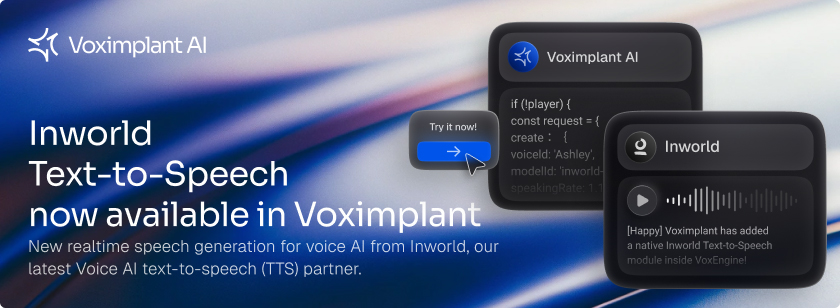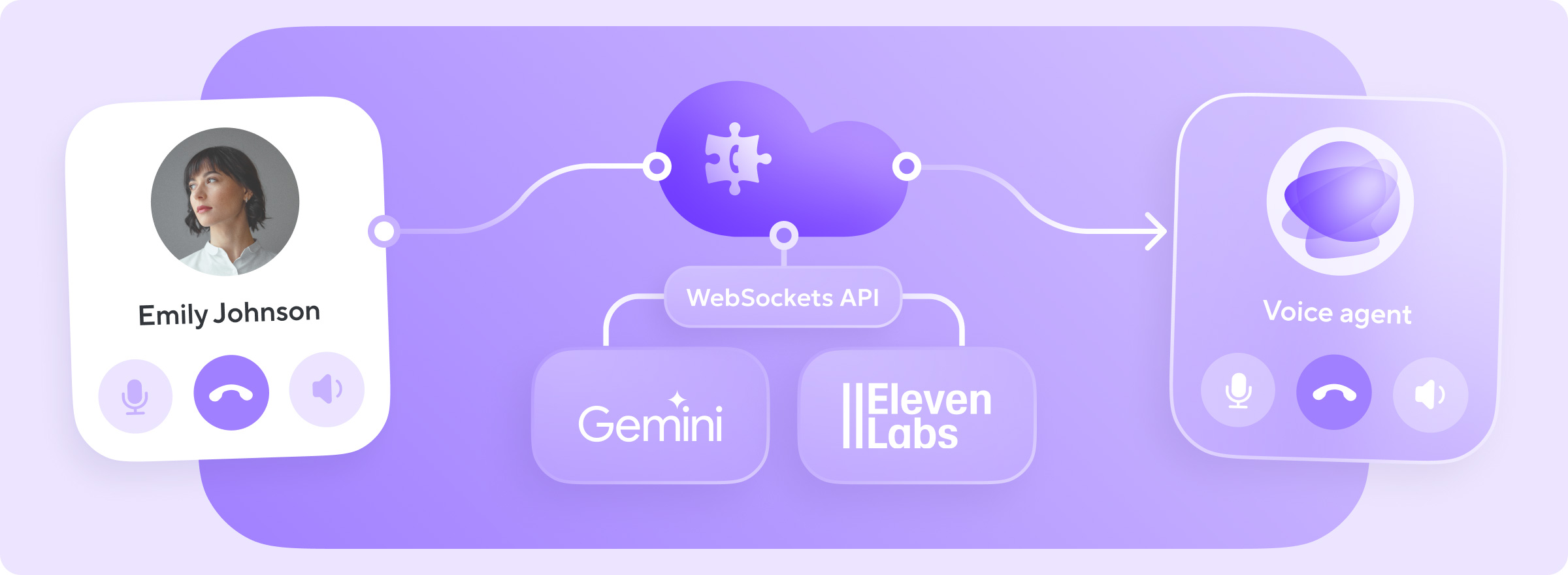Computer telephony integration (CTI) connectors deliver increased contact center efficiency and better customer experiences, but their cost and complexity has limited adoption to large enterprises. However, new direct integrations between cloud-based contact center communications and customer relationship management (CRM) systems are bringing these benefits to more organizations.
CTI connectors are vital pieces of contact center software that integrate communications and CRM systems. But they can be inflexible, complicated and costly. Cloud-based systems are eliminating the need for this middleware and enabling systems to directly exchange data. As businesses migrate their contact center infrastructure from licensed software to a cloud services model, they are able to leverage features enabled by direct integration, including agent screen pops, enhanced call routing and much more.
In this blog, we’ll describe the various technologies used to integrate contact center communications and CRM systems and the associated trade-offs. Also, we’ll describe the integrations offered by the Voximplant CPaaS.
Why integrate CRM and telephony?
CRM systems are the hub of operations for most sales and service organizations. They typically integrate with systems across the sales and service tech stack to automate actions and eliminate the need for users to toggle back and forth between systems. CRM systems commonly integrate with email, calendar, social media, prospecting services and team collaboration systems.
In the contact center, no CRM integration is more vital than with the communications system. By connecting these systems, the handling of real time communications sessions can be informed by data stored in the CRM and the presentation of CRM screens can be informed by metadata provided by the communications system. This bi-directional integration creates a wealth of opportunities to make communications more efficient and improve experiences for customers and agents alike.
Business benefits
Here are some examples of how sharing data between CRM and communications systems can benefit agents, customers and the bottom line.
Increase agent productivity
With integrated communications and CRM, contact center agents can initiate and receive calls inside their CRM screen. For example, the phone numbers listed on a customer record are clickable and call control functions (e.g., answer, hang up, transfer, hold, mute) appear in a browser pop-up window, eliminating the need to toggle between the CRM and telephony interfaces when handling calls.
When agents receive a call, they know who is calling before they answer the call. The communications system sends Caller ID and agent ID data to the CRM before setting up the call with the agent. This enables an automated screen pop on the agent’s CRM display containing detailed information about the caller. Screen pop significantly reduces handle time by eliminating the need for the agent to query the CRM and other tools to find the caller’s information.
You can use an interactive voice response (IVR) system to further reduce handle time. An IVR enables you to gather information from the caller that can be used to lookup additional CRM data and route the call to the most appropriate agent skill set. For example, the IVR can prompt the caller to enter/say their customer ID, invoice number, trouble ticket or other data that can be used by the CRM to determine the best skill set for the call. Then, the CRM provides this data to the automatic call distribution (ACD) system for routing.
Improve customer experience
Automatic caller identification addresses one of the biggest complaints voiced by customers - having to repeatedly provide their personal information to agents so the agent can pull up their CRM record. In addition, it allows the agent to greet the caller professionally by their name.
Routing the caller to the agent best able to handle their inquiry addresses another common gripe - repeated transfers and waiting. By sharing CRM information with the communications system, calls can be routed directly to the skill set most qualified to handle the caller’s issue. These optimizations contribute directly to improvements in the first call resolution metric, which is a contact center KPI.
Improve agent experience and retention
CRM and communications integrations enable agents to access a unified dashboard with all the information they need to service the caller at their fingertips. For example, they can access call logs (e.g. call history, recordings and transcripts) and customer data (e.g. open tickets, chat transcripts, emails, purchasing and fulfillment data) from integrated business tools. Agents that are empowered to please callers are more satisfied with their position and likely to stay with their employer.
Integrated communications tools improve collaboration across the contact center and organization. Agents can easily engage their manager or colleagues to help resolve difficult issues instead of transferring calls. When transfers are necessary, integrated communications enables a warm transfer where the recipient receives the screen pop data along with the call.
Supervisors benefit from integrated CRM and communications, too. They can provide whisper coaching and call barging, which enables a supervisor to listen to a call and either speak to the agent without the customer hearing them, or enter the call as a third participant. Metrics and reporting are integrated across systems to provide a more comprehensive view of call center performance, including average handle time by customer type and first call resolution by problem type.
CTI deep dive
In a traditional licensed software contact center infrastructure, computer telephony integration (CTI) requires development of software that connects a private branch exchange (PBX) or automatic call distribution system to the CRM system. Sometimes called middleware, a CTI connector is deployed on a server and uses APIs to control calls and receive event notifications from a communications system. For example, using a CTI connector, a CRM can initiate a call on behalf of an agent, or receive a notification indicating a call is waiting in a queue.
Most communications systems adhere to open standard APIs, such as Microsoft Telephony API (TAPI) and Sun Microsystems Java Telephony API (JTAPI). However, each communications vendor customizes the interface to their product’s unique features. For example, Cisco, Avaya, Genesys, and Aspect publish their own JTAPI-based interfaces.
Similarly, popular CRM systems provide APIs that enable integration with communications systems. For example, Oracle’s Siebel CRM offers a CTI API specifically for integration with third-party CTI middleware packages and SAP offers its Integrated Communication Interface (ICI) for integration with a third-party adapter.

Contact center architects typically purchase CTI software from 3rd party developers with specialized expertise, making CTI a costly and complicated proposition. Licenses, maintenance fees and server hosting drive incremental costs while 3rd party vendors slow the pace of innovation. Certain CRM and communications vendors require CTI software to be certified with their system for supportability purposes.
When PBXs and ACDs must be integrated with a cloud CRM service, the architecture is much the same. SaaS applications like Salesforce, Servicenow and Microsoft Dynamics publish APIs that make integrations simple for developers. They enable custom integrations, including CTI connectors for licensed software communications systems.
What are direct CRM integrations?
Contact center architects are seeing some welcome relief from this complexity as they migrate from licensed communications infrastructure to cloud communications services. The major contact center as a service (CCaaS) and communications platform as a service (CPaaS) vendors are providing direct integrations with their CRM SaaS counterparts. They offer integrations with Microsoft Dynamics, Oracle Service Cloud, Salesforce, Servicenow, ZenDesk, Zoho CRM and other CRM services.
Amazon Connect provides a hybrid CRM integration strategy. It provides its own adapter for integration with Salesforce and relies on 3rd parties to create adapters for other CRM systems.
Direct integrations between CCaaS and CRM eliminate the cost and complexity of sourcing 3rd party CTI software. Instead, contact center architects can configure real time data sharing between the two systems. This simplifies operations and provides flexibility to adjust contact center functions as business requirements change. For example, you can make quick changes to call routing or screen pop behavior in response to a seasonal promotion or unplanned event.
Traditional licensed software communications systems don’t offer direct CRM integrations. Whether they are deployed on-premises or in a cloud data center, traditional PBX and ACD systems continue to offer only a standards-based CTI API. If you want to eliminate middleware complexity, you have to move to a cloud services model.
The contact center industry is in the midst of a massive shift from licensed PBX and ACD software infrastructure to CCaaS and CPaaS services. Driven by the benefits of simplicity and flexibility, this shift began a few years ago with medium sized business and has spread to enterprises as cloud solutions become more scalable. Direct communications and CRM integrations further enhance the advantages of a cloud infrastructure model and bring their benefits to all sizes of organizations.
Voximplant integrations
The Voximplant CPaaS offers simple and flexible options for integrating with CRM systems and enriching the agent interface with powerful telephony features. It offers a direct integration with the popular Zoho CRM, a purpose-built CRM integration API for its CCaaS platform, and web methods for developers that need flexibility to customize their integration.
The Voximplant integration for Zoho brings click-to-call, automatic call recording, integrated call history tracking and other features to the CRM. It also integrates a full featured WebRTC-based telephony interface that enables agents to manually initiate and receive calls through their Voximplant service. Zoho CRM is a leading CRM SaaS platform with a global base of enterprise and midmarket customers.
Voximplant offers the flexibility to integrate its CCaaS platform with any SaaS CRM offering an API. Voximplant Kit includes a CRM integration interface designed to incorporate CRM data as part of its call flows and agent workspace. The Voximplant platform also includes HTTP request and webhook options for integration with CRM systems.
Direct integrations bring CTI benefits to all contact centers
Direct integrations between CCaaS and SaaS CRM services provide another incentive for contact center architects to move their organization to the cloud. If you’re using traditional licensed software, you’re likely aware of the many advantages CCaaS and SaaS CRM offer. Direct integration between the two services is one more reason to consider migrating to a cloud contact center infrastructure.
CTI connectors offer many benefits but at a steep price, which has limited their use to large, enterprise contact centers. Direct integrations between cloud service providers makes these benefits accessible to contact centers of all sizes. The Voximplant CPaaS is a perfect example: Its direct integration with Zoho enables a wide range of contact center organizations to enjoy seamless click-to-call and other rich communications features within the CRM interface.





